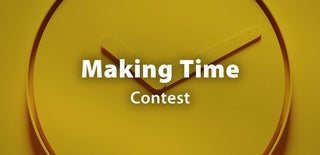Introduction: The "mini Solar Book", Torch and Charger
The "mini solar book" is another solar power supply and charger, which acts as LED light too.
Its torchlight function is very useful and effective. Indeed white LED only consumes 20 mA, so it will provide light for about 30 hours with a single charge of the battery, and with solar cells addition its life is practically endless. Of course you can also use this device to power your cellphone, your GPS logger, or any other little USB gadget (although battery has a reduced capacity due to its small size).
Step 1: The USB Hub
To provide the connection to most devices is good to use an USB female socket. You can find many of them in USB hubs. This model has four USB 2.0 ports, you don't need 3.0 for this project, and actually 1.0 is good enough.
Cut the circuit board in two and keep the smaller part with two USB sockets.
You can save remaining ports and USB plug for next projects.
Step 2: Solar Cells and Battery
I used very cheap 2V tiny solar cells. We need to obtain about 4-5V output voltage so let's connect two of them in series, indeed they will provide up to 5V in direct sun light, although the amperage will remain very low.
The battery is a small flat Li-ion 3.7V battery for cellphones, these are not powerful as 18650 cells but they are very small and a great choice for a project like this.
I opened the plastic case and extracted the Li-ion cell, with its protection circuit. Keep half case as cover and safe protection.
Step 3: Charger Circuit
These battery charger modules usually have three pairs of pads for connections, for all three couples of wires beware to respect the polarity (don't follow my example, try to use black and red wires as in the following schematic):
- DC input (also marked as "charge", "charging port", "P+ and P-", "3.7V+ and 3.7V-") where you have to connect your solar cell(s), this usually accepts from 3.7 to 6V or more.
- 5V DC output (also marked as "increasing output" or "V+ and V-") where you will connect your device, through an USB or another power female plug, as you see in picture this voltage is very precise.
- Battery connections (usually marked as "B+ and B-"), here connect your battery (or better your battery holder), you can also try to connect two or more batteries in parallel, but I don't suggest it.
Step 4: Size Measurements
Last components are a simple ON-OFF mini switch, a white high efficiency LED and a resistor.
Since LED consumes about 20 mA please use a 220 ohm resistor (V=IxR; 5=0.02xR; R=5/0.02=250ohm), the one in pictures has wrong value.
My purpose here is to keep the size for my device as smaller as possible. To do that we need to plan the exact arrangement of the components. Therefore place them over the two solar cells, cut the wires to the exact length, and glue as first the rubber rectangle taken from a bike tube.
Step 5: Assembling
Now solder the remaining wires as in the schematic, and connect all components.
To understand where the GND and VCC traces are on the hub circuit follow the diagram on the side of the schematic. You can indeed examine the USB socket to trace the right connections.
As last component solder the battery's wires.
To activate the circuit you need to power it with at least +5V. This is easily achieved exposing both solar cells to direct sun light. If you don't have the sun at your disposal you can use a powerful lamp or an external +5V DC power source, just connect it in parallel with the solar panels.
Step 6: Gluing
I glued everything in place. I used bike tube cement to glue rubber and two-components glue for the other parts.
I wished to use velcro to keep the mini-book closed but I discovered that it's a bit too thick. I then opted for a simple rubber band, but you will probably find a better solution. You shall open the "book" to expose both covers to sunlight and charge the battery.
Step 7: The Torchlight
The tiny device is now ready. Test it in the dark, the LED is not very powerful but it comes in handy in some occasions. Try to connect a device to the USB sockets too, if the device doesn't consume more than 500-600 mA it may be powered, otherwise it will probably going charging. Obviously this charger is not suitable for big cellphones or tablets, since they need a lot of power.
Step 8: Ready
If mandarin was not enough as color for the brochure here there are two pictures of "mini solar book" on bananas ;-)













